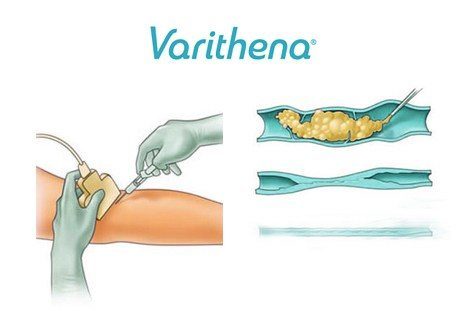Early Varicose Vein Treatment
Up until the turn of the century and even a little beyond, varicose veins were treated by a surgical method known as vein stripping. This procedure was performed in a hospital under general anesthesia and involved incisions at either end of the vein. Through these incisions, a special hook was inserted into the vein, which “stripped” or removed the entire vein from the leg. Vein stripping was an effective way to eliminate large, often painful varicose veins. However, the cure was nearly as unpleasant as the condition itself. Patients often had to remain in the hospital for multiple days, recovering from the procedure. Even after they went home, many experienced debilitating discomfort even weeks after surgery.
The Introduction of Varisolve
Varisolve was originally introduced as an alternative to vein stripping and continues to be used as such today. The technology was first purchased by BTG, a medical device company, in 1996. At that time, it was predicted that Varisolve would take the vein treatment market by storm by 2001 as patients realized they no longer needed to undergo painful surgery to say goodbye to their varicose veins.
Unfortunately, the 2001 prediction was a bit premature as BTG hit some rocky points in the early testing period of Varisolve. However, the company persevered through the obstacles and the medication was finally approved by the FDA for use in the U.S. in 2013. By this time, the name of the product had changed from Varisolve to Varithena.
Benefits of Varisolve
Varisolve was introduced as a foam solution that contains a chemical known as polidocanol. When the substance is injected into a varicose vein, it irritates the lining of the vessel so it seals closed and collapses. The collapsed vein will be eliminated by the body over time, while blood redirects naturally to healthy veins nearby. As circulation in the area improves, patients also notice substantial relief of painful symptoms, such as cramping, swelling and aching of the lower leg.
The solution works on the same basic principle of sclerotherapy procedures used to treat smaller, superficial spider veins. The solution used for this type of sclerotherapy is a liquid solution that is very effective on smaller vessels. However, when the liquid is placed into larger veins, it is not sufficient for sealing the vein closed and is rendered ineffective.
The foam solution that makes up Varisolve (or now Varithena) addresses that issue. Because the solution is thicker, it can displace blood in the vein so that it is better able to treat the vessel lining. At the same time, the foam solution can be tracked through ultrasound imaging, making the procedure more accurate and effective.
Foam sclerotherapy is now considered a top choice in treating larger varicose veins, particularly those that cannot be easily addressed with laser or radiofrequency procedures. This treatment is available at Vein Specialists of the Carolinas, as well as other procedures that allow us to customize treatment to the unique needs of each of our patients. To learn more about Varisolve, now known as Varithena, contact Vein Specialists of the Carolinas today at 704-544-5245 (Charlotte) or 704-861-2072 (Gastonia).

